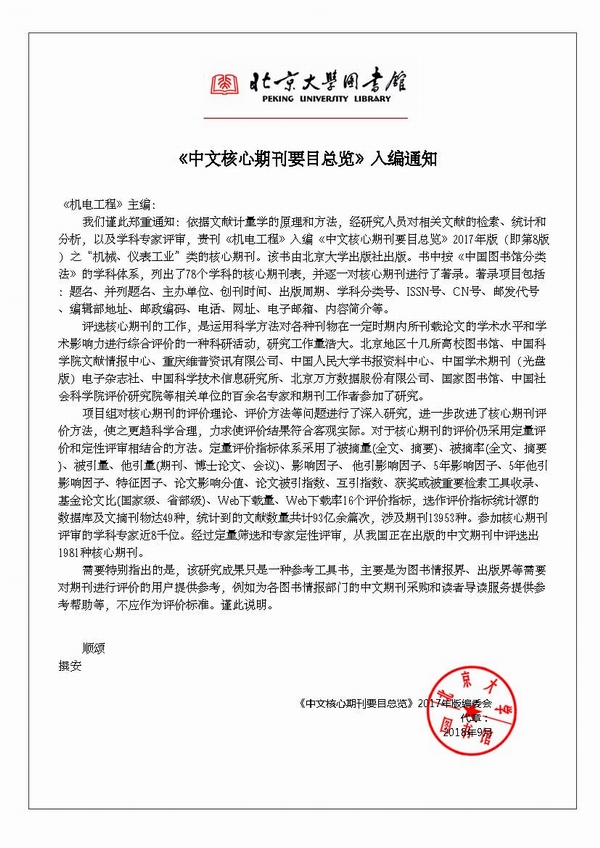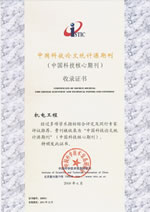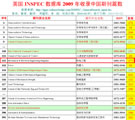
Founded in 1971 >
Chinese Sci-tech Core Periodicals >
British Science Abstracts (SA, INSPEC) Indexed Journals >
United States, Cambridge Scientific Abstract: Technology (CSA: T) Indexed Journals >
United States, Ulrich's Periodicals Directory(UPD)Indexed Journals >
United States, Cambridge Scientific Abstract: Natural Science (CSA: NS) Indexed Journals >
Poland ,Index of Copernicus(IC) Indexed Journals >
International Standard Serial Number:
ISSN 1001-4551
Sponsor:
Zhejiang University;
Zhejiang Machinery and Electrical Group
Edited by:
Editorial of Journal of Mechanical & Electrical Engineering
Chief Editor:
ZHAO Qun
Vice Chief Editor:
TANG ren-zhong,
LUO Xiang-yang
Tel:
86-571-87041360,87239525
Fax:
86-571-87239571
Add:
No.9 Gaoguannong,Daxue Road,Hangzhou,China
P.C:
310009
E-mail:
meem_contribute@163.com
Abstract: Aiming at the problem of force compliant control of the robotic arm interacting with the environment during operation, an adaptive impedance control algorithm based on Kalman filtering was proposed to complete the stable control of constant force in the case of unknown environmental position and environmental stiffness. Firstly, the impedance control model of the robot arm and environmental contact was constructed, and the relationship between force and position was established. Then, the adaptive impedance control model was established, and the environmental position and environmental stiffness of the robot arm contact were estimated according to the robot arm force tracking error and position error, and the control position of the robot arm was updated. The impedance control algorithm was discretized, and the impedance control system was used to Kalman filter. Finally, the stability and effectiveness of the adaptive Kalman filter impedance model were verified by simulation, and the tracking experiments were conducted by the robot to verify the effect of constant force tracking under different environmental parameters. The results show that the adaptive impedance control algorithm based on Kalman filtering can achieve the force tracking error within 5%, and the convergence speed can increase by 61.5% in the inclined environment, with less jitter and faster convergence speed compared with the traditional impedance control, which can achieve the ideal constant force control effect.
Key words: compliant control; adaptive impedance control algorithm; Kalman filtering; robot control; environmental position and environmental stiffness; constant force control








